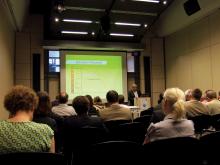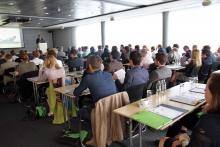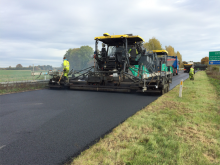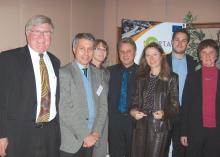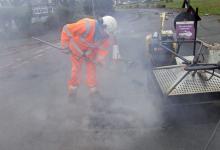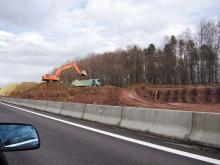The FEHRL Infrastructure Research Meeting 2013 (FIRM 2013) raised key issues in transport innovation
The key theme for FIRM 13 was advanced and innovative construction and maintenance, highlighting the importance of efficient asset management. Infravation, or infrastructure innovation, was another focus area for the event. Joris Al, FEHRL president said, “We aim to bring interested parties together. We’ve decided to build on existing knowledge rather than starting with front edge technologies and working
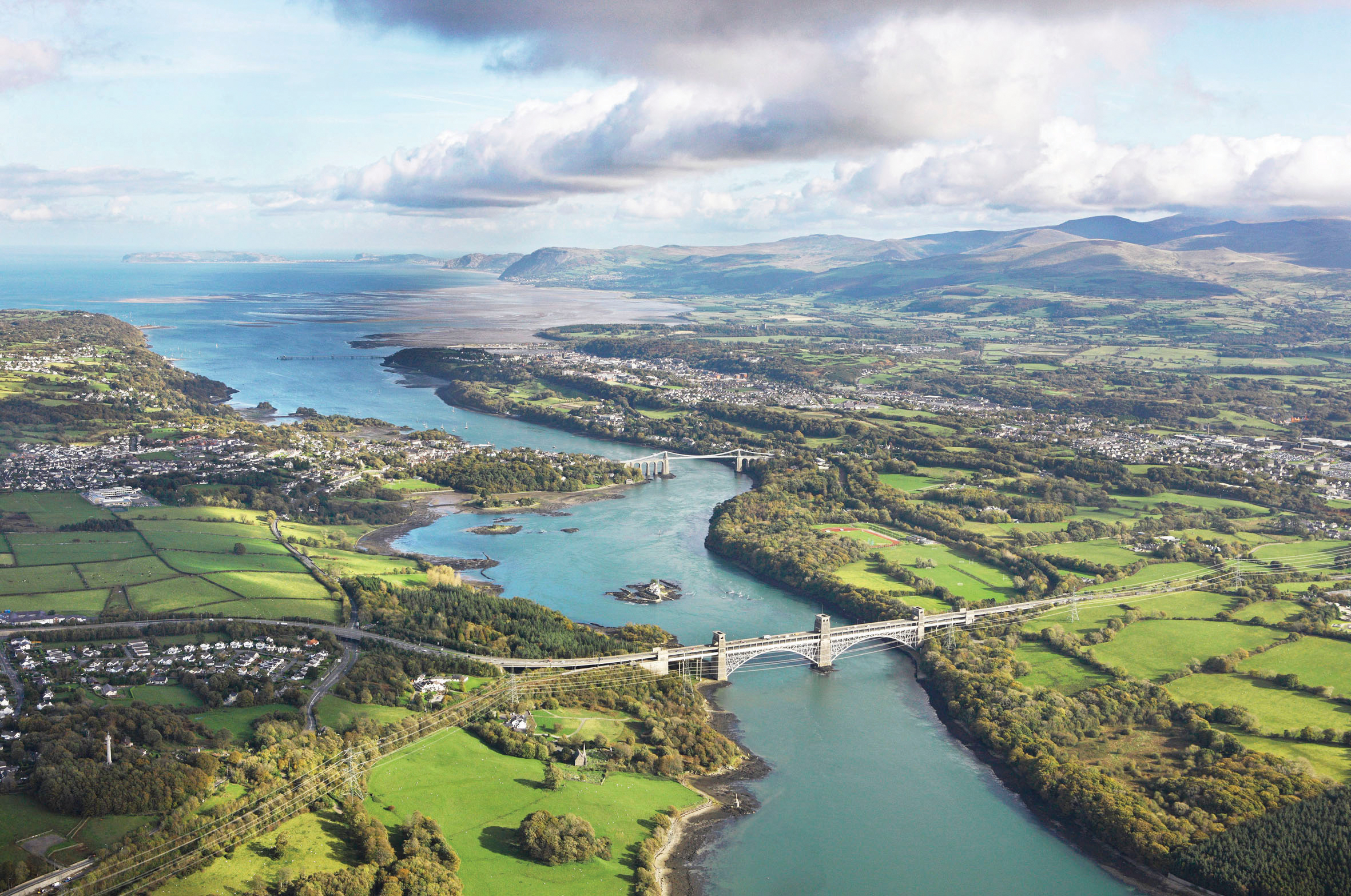
Prioritisation of maintenance work can allow for more effective asset management, which is of particular importance for major structures such as bridges
The FEHRL Infrastructure Research Meeting 2013 (FIRM 2013) raised key issues in transport innovation
The key theme for FIRM 13 was advanced and innovative construction and maintenance, highlighting the importance of efficient asset management. Infravation, or infrastructure innovation, was another focus area for the event. Joris Al,Al said that choosing the best transport technologies and asset management practices can yield substantial benefits. Claire Hanson of the UK’s
She explained that while the data that is available generally highlights the technical issues surrounding a specific piece of infrastructure, the wider implications of its potential closure for traffic flow are still too rarely considered at present. Budget restraints mean that repair and maintenance works have to be prioritised however, with backlogs of work developing. Hanson added, “They can either come back with a higher priority the next year, or be set aside.”
Aleš Žnidaric of ZAG Ljubljana focussed on bridge maintenance and highlighted the issue that condition assessments vary widely across Europe. He said, “The interpretation of results is very different.”
He said that the Netherlands for example has far less stringent risk assessment procedures for bridge safety than countries including the Czech Republic, Denmark, Poland and Slovenia. Žnidaric also highlighted how models for the impact of traffic loading may be inaccurate as vehicles have changed over time. Heavier trucks are now in use on the roads, so older models may be outdated and overloading is also a serious problem in some countries, adding to the inaccuracy of data based on traffic volumes. Forecasting traffic demand is however complex, particularly with regard to through traffic, and he said, “It’s difficult to estimate even for individual countries.”
Lifespan predictions for infrastructure assets may have issues and Žnidaric said, “It would be interesting to know how conservative they are. The data quality is a challenge. Modelling is being widely used but the quality of the modelling has to be verified.”
Overall however Žnidaric reinforced a point also made by Hanson, that a network-based approach to asset management should replace the earlier object-orientated method. “We should manage transport assets as a whole and not in bits. It’s the wrong approach to do a bridge upgrade one year and then the roadway on the same route the following year.”
Mikkel Bruun, communications and marketing manager
The asset management programme is driven by those administrations participating, with experts from each funding National Road Agency (NRA) forming a board to oversee projects and the affiliation with the stakeholders. The projects interconnect with each other, with the emphasis being on the usability of results for the NRAs.
The research has focussed on how NRAs can better match expectations by incorporating aspects of road and transport management into more comprehensive systems. A close analysis of the asset management programme shows that there has been a shift in the perception of stakeholders in the minds of practitioners and decision makers. The fact that stakeholders are a difficult group to define and manage had not sufficiently understood by most European NRAs however.
But senior NRA members, the national steering groups, recognised a need to look into the definition and the expectations of stakeholders. This was intended to align data collection methods or define new indicators for road performance, and also made a step towards introducing values from social science. But the expectations of road users cannot be explained by formulae. Bruun pointed out that with the right combination of technical data and interviews, it is possible to assess the expectation and satisfaction of different stakeholders. The Stakeholders’ Expectations and Perceptions of the future Road Transport System (EXPECT) project provided this methodology.
For a road owner, the stakeholders are crucial as their collective influence is large. The key is to choose the right strategy for each category, including the right level of information and dialogue. A methodology based on focus groups and accompanied journeys with road users has been used by the EXPECT project to help NRAs improve understanding of the needs and expectations of different stakeholders in relation to the various categories of highway assets.
Bruun said that the next move should be to establish appropriate service levels and develop a communication and information strategy, targeting different stakeholders. It should also explain the necessity of routine maintenance and construction.
The Finnish Road Administration has carried out a case study using the methodology and its early conclusions are positive. It said, “The approach can also be used for other types of user expectation studies in our organisation, such as prioritisation between different traffic modes or finding out what are the key services in building seamless networks.”
Inter-modality might be a new focus for asset management – to be able to predict socio-economic impacts and consequences across all modes would possibly save the European Community money and effort.
Bruun continued that a new approach has emerged, where primary stakeholders have been identified as the road users. This is not self-evident, as many researchers and service providers have worked with direct NRA guidelines, defined in part by budgets. They have also been defined by technical necessities such as deterioration and partly by strategic goals on political topics such as the environment, safety or climate mitigation, all exemplified by the European Research Arena-Net Road (ENR) - joint calls.
There is now a move towards a better connection between societal needs and proposed actions. Prioritisation and funds are crucial, but there is also a question of explaining the benefits of road and bridges and infrastructure in economic and political terms. The NRAs are struggling for funding, and there is a need to explain the consequences of insufficient maintenance budgets and also how asset management can support and improve the overall quality of life. With the identification of the road users as the key stakeholders, the NRAs can use a new mind-set and new tools for existing asset management systems and projects. The asset management programme showed society can engage in decision making, through accompanied journeys and group interviews as well as including a prioritisation model of stakeholder needs in the planning process.
For road users, there are benefits as they can give input through representative interviews and receive insight into the allocation and prioritisation of tax revenue. An added benefit is improved knowledge and acceptance of road intervention procedures.
But for every benefit of transport infrastructure for mobility and economic reasons, there are also negative issues. There is a responsibility for experts and decision makers to investigate and mitigate possible problems. And in the future it may be feasible to balance out the positive and negative impacts of road and transport.

